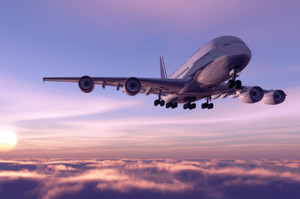How to Avoid Back Pain During Holiday Travel
During this time of year, many of our holiday plans include travel. While spending time with family and friends is the best part of the holidays, getting to and from our destinations can be a pain – literally.
Sitting in cramped airplanes and cars for extended periods of time, lifting heavy suitcases, and carrying luggage through terminals can all wreak havoc on the back and neck.
Avoid causing injuries during your holiday travel with the following tips:
Never twist while lifting. This is a common cause of injury to the low back. Pivot with your feet so that your whole body moves instead of just twisting your back.
Pack light. Use 2 or 3 smaller bags rather than one large, heavy bag, especially if you will have to lift the bags in or out of car trunks, off airport baggage carousels, into and out of overhead bins, etc.
Ice is key. There are many ways to make sure you have access to ice/cold to numb the lower back when traveling. The simplest is to bring extra Ziploc bags and whenever you need to, ask a flight attendant to fill it with ice for you. Place it between your lower back and the seat. Leave it on for 20 minutes to numb the lower back and repeat as needed. You can also use cold packs that are manually activated. If security will let you, bring a small gel ice pack on the airplane. Flight attendants will keep them in the fridge for you.
Heat helps too. There are disposable, portable hot packs that heat up after you open them, so you can bring them on your travels and open and apply them as needed. Commercial heat wraps, such as ThermaCare, incorporate heating units across the low back area of the band. Such types of heat wraps last for several hours, making them ideal to provide back comfort during lengthy travel. If you want to bring gel heating packs, first check with your airline to see if they’re allowed past security.
Stretch key muscles. Sitting for extended periods can cause stiffness and tension in the hamstrings (the muscles in the back of the thighs) and hip flexor muscles, which in turn puts added stress on the low b ack. Ask your doctor for a few safe hamstring and hip stretches you can do while traveling.
Fix the seat. Place a small rolled-up airline pillow, blanket, towel, or lumbar pillow between your back and the seat to support the natural inward curve of your lower back. You may also use commercial low back supports if you prefer. Supporting the curve in your low back is especially important with many airplane seats, as they are often worn out and force your lower back to an unnatural, stressful position. If the bottom of the seat is concave from too much use, place a folded blanket on the seat.
Wear slip-on shoes. Wear high quality, comfortable supportive shoes if you will be walking distances through airports, train stations, etc. Slip-on shoes are easy to slip on and off without having to bend over when going through security.

Categories
Archives
Contact Dr. Mudit Sharma
Phone: (571) 921-4877
Toll Free: (855) 774-6334
Monday – Thursday: 8am – 4pm
Friday: 8am – 2pm
Fredericksburg
4604 Spotsylvania Parkway, Suite 300 Fredericksburg, VA 22408
Manassas
8650 Sudley Road, Suite 315
Manassas, VA 20110-4418

